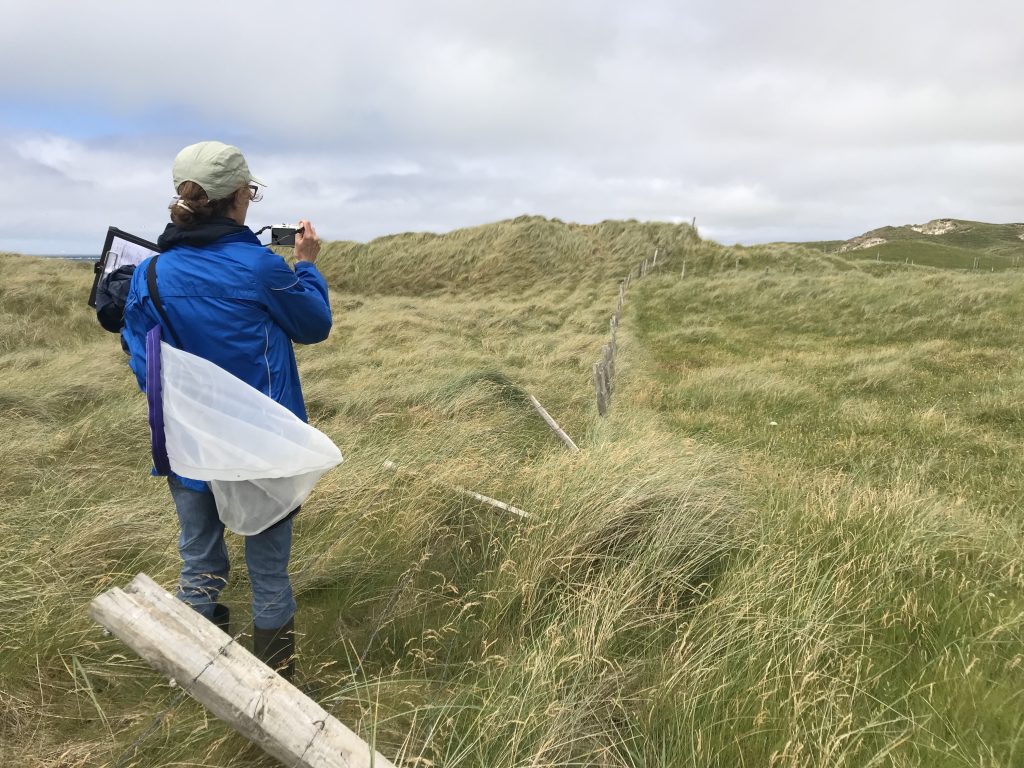Pollinators are an intrinsic feature of coastal habitats, and they are vital for maintenance of the diverse, flower-rich sward in the target EU Annex I habitats Machairs (*21A0) and Fixed dunes (*2130).
Drivers of pollination decline include land-use change, intensive agricultural management and pesticide use. Habitat degradation is implicated in pollinator decline through loss of resources for pollinators in the landscape (e.g. forage, shelter and breeding sites). While bees and butterflies are often the most obvious pollinators, moths and flies (especially hoverflies) play a significant role in delivering pollination but also from the perspective of species diversity.
Conservation priorities
LIFE on Machair will focus on these four groups of pollinators (outlined in the Table below), while recognising there are a number of pollinator groups also present in the Machair systems. For many pollinator species there are limited data and a big part of the LIFE on Machair project will be to establish what species are present on each site and relative levels of abundance between sites.
An overview of the conservation status of pollinator groups monitored by the LIFE on Machair project.
| Pollinator | Current Status |
|---|---|
| Bees | Populations of over 50% of Irish bee species have declined since 1980 and since 2012, and bumblebees have declined by 17%. Machair systems are an important habitat for pollinators including species assessed as vulnerable on the EU Red List. For example, the Great Yellow Bumblebeeand Northern Colletes. |
| Butterflies | This group has suffered a decline of 6%, and 17% of the native Irish butterfly fauna is under threat of extinction, with a further 15% Near Threatened. Ireland’s only Annex II listed insect, Marsh Fritillary, can be found in wet Machair habitats. |
| Hoverflies | There are up to 180 species of hoverfly in Ireland. Hoverflies are true flies in that they appear to have only two wings. A Red Data List for Irish hoverflies is presently in development. |
| Moths | Up to 8% of species in Ireland are threatened and another 4% are Near Threatened or Data Deficient. Some of the more commonly recognised moths include the Six-spot Burnet Moth, and less common are Belted Beauty. |
LIFE on Machair actions to improve pollinator habitat and populations
The key LIFE on Machair activity for pollinators will be working to establish the baseline presence / absence and likely trends in population status at each site. Following from this, working with farmers and landowners to identify how to conserve and maintain existing populations, and by trialling habitat management actions and targeted measures such as those developed through the Great Yellow Bumble Bee EIP and Farmland Pollinators EIP.
For more on pollinators see the All Ireland Pollinators Plan and associated resources.

